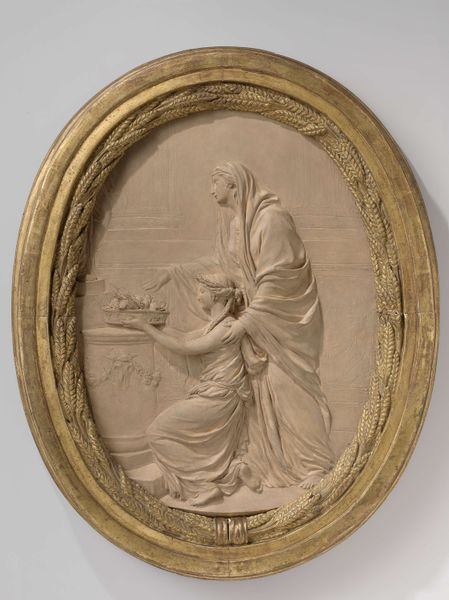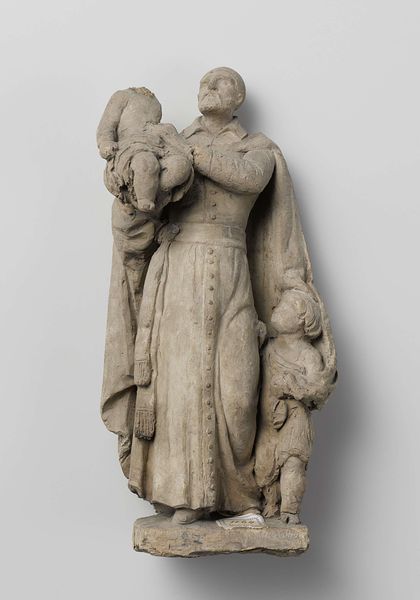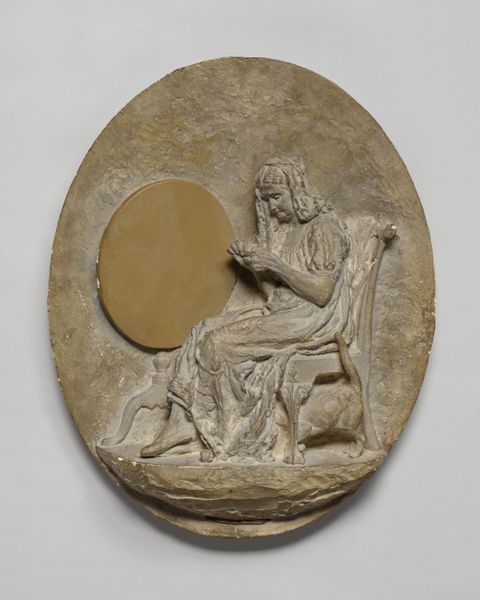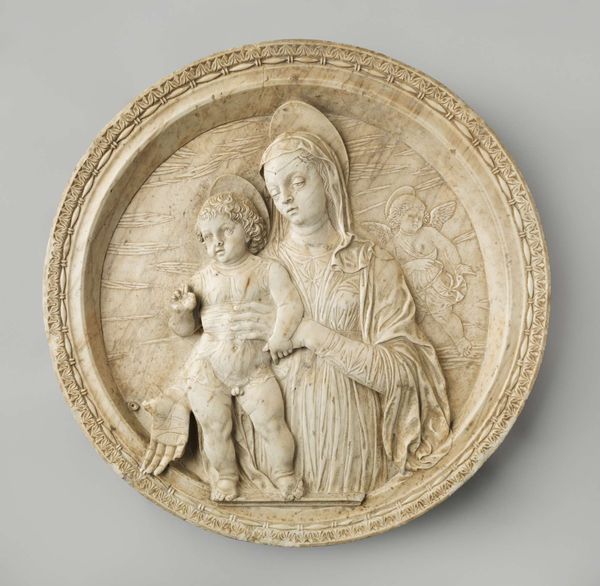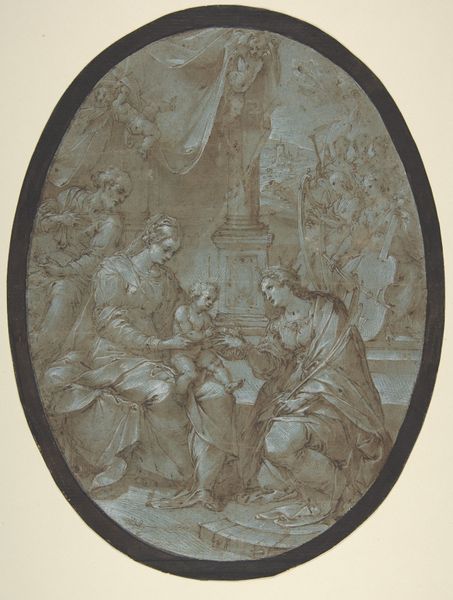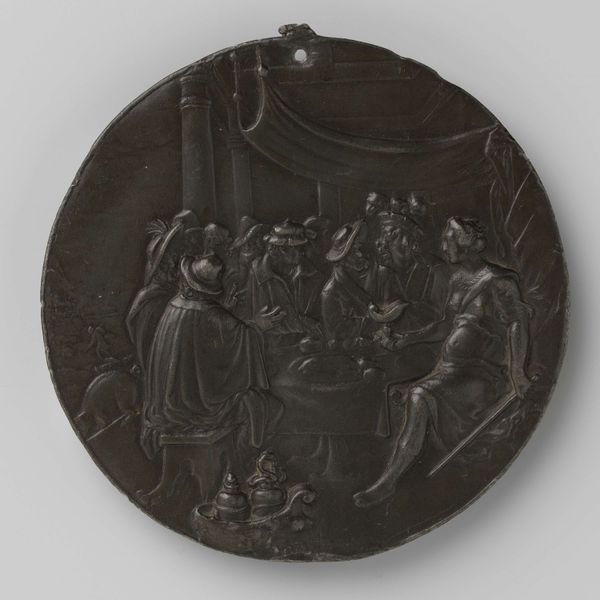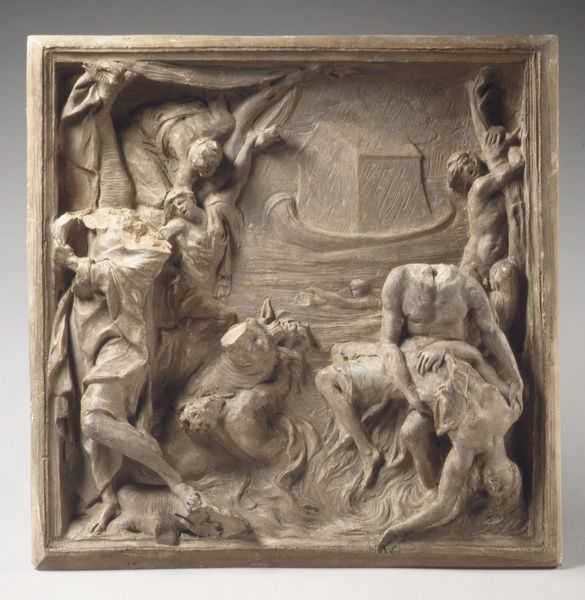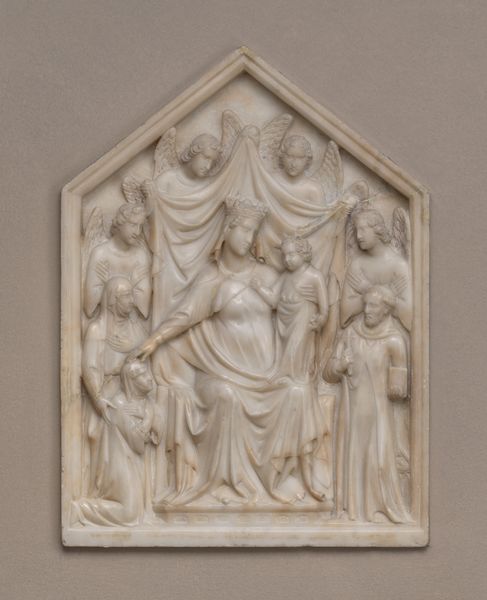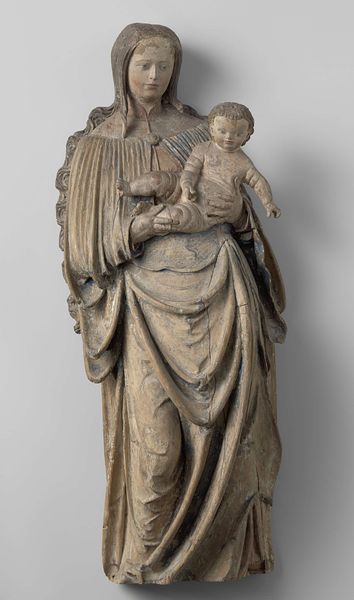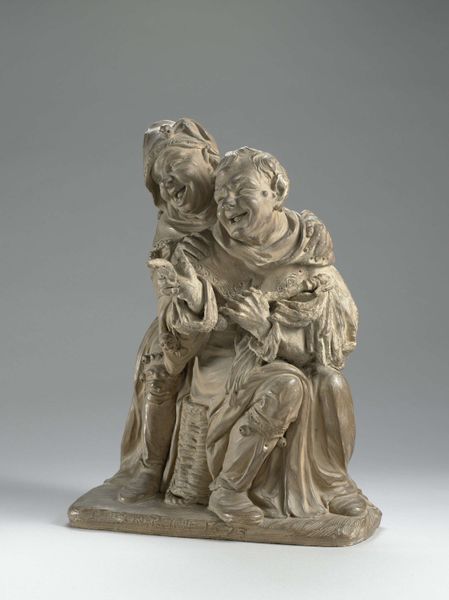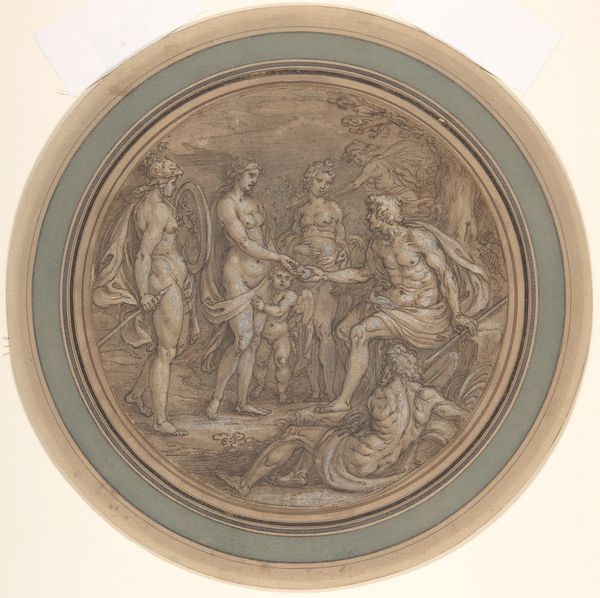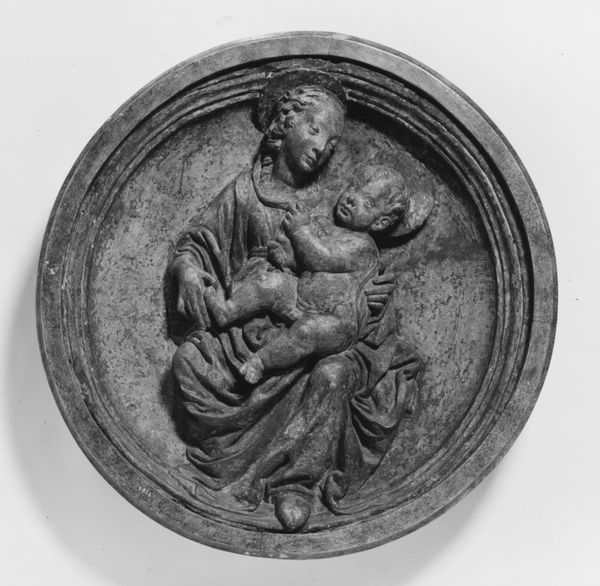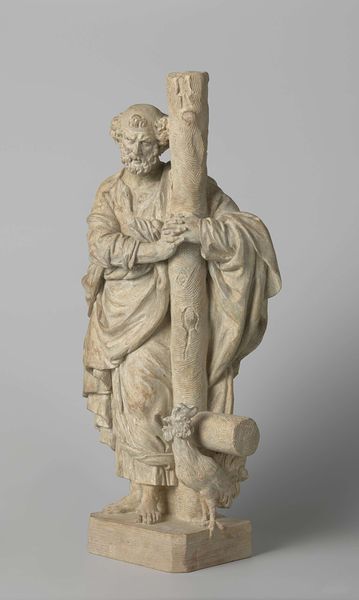
relief, sculpture, marble
#
neoclacissism
#
allegory
#
sculpture
#
relief
#
figuration
#
sculpture
#
marble
#
rococo
Dimensions: height 42.5 cm, width 31.5 cm
Copyright: Rijks Museum: Open Domain
Louis Simon Boizot crafted this delicate terracotta relief, "The Sacrifice to Venus." It portrays a scene steeped in symbols of love and devotion. Notice the garland of roses held by the figure of Venus, as the veiled figure offers her own garland, laden with meaning. The rose, emblem of Venus, signifies not only love, but also beauty and desire. We can trace this motif back to ancient Greece, where roses adorned Aphrodite, the goddess of love, and were woven into wreaths for celebrations of fertility and passion. This garland echoes the cyclical nature of life, death, and rebirth—a powerful force engaging viewers on a subconscious level. In Botticelli’s "Primavera," we see Flora scattering roses, an act of renewal, and a promise of spring. The rose, however, also carries the weight of transience; its beauty is fleeting. Observe how the image of the rose resurfaces through history, evolving from a symbol of pagan love to one imbued with Christian devotion. The rose’s journey is never linear, but cyclical. It continues to bloom and bear fruit in the collective memory of humankind.
Comments
rijksmuseum about 2 years ago
⋮
These are Boizot’s earliest known sculptures. He made them in Rome, where he worked and studied after having in 1762 won the Prix de Rome (a prize for artists that came with a travel stipend). The sacrificial scenes are conceived as antique reliefs, with simple scenes of draped women in profile. These works are early examples of Neoclassicism in sculpture.
Join the conversation
Join millions of artists and users on Artera today and experience the ultimate creative platform.
